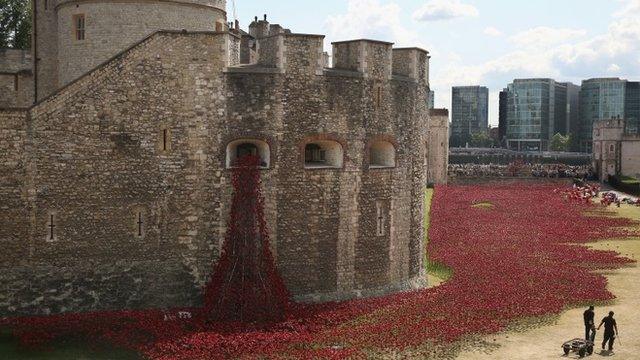Poppy sculptures find home at Imperial War Museum North
- Published
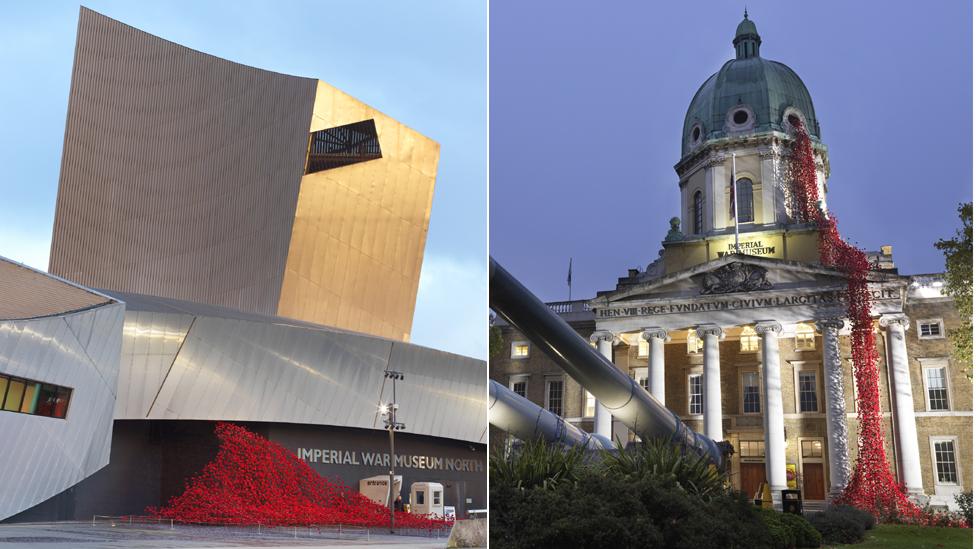
The Wave and Weeping Window sculptures will be combined for a new design
Imperial War Museum North will become the permanent home for poppy sculptures that drew millions of visitors to exhibits marking the centenary of World War One.
They were among nearly 900,000 ceramic poppies at the Tower of London in 2014.
Sections - known as the Wave and the Weeping Window - were then exhibited around the country.
The museum said it felt "fitting" for those sections to be permanently housed in Trafford, near Manchester.
The initial Blood Swept Lands and Seas of Red installation included 888,246 poppies - one for every life lost among the British and colonial forces on the World War One frontline between 1914 and 1918.
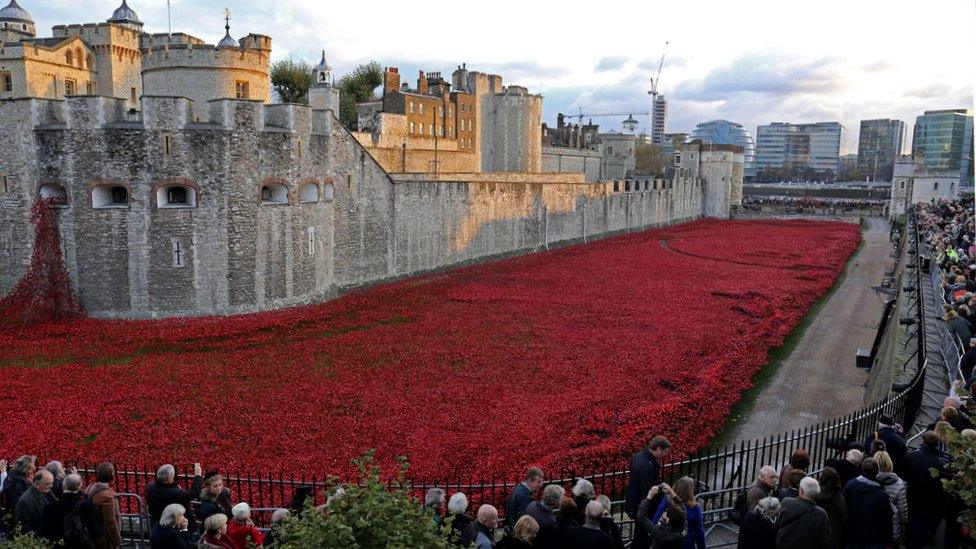
The poppies installation was designed by Paul Cummins and Tom Piper
More than five million people visited the original artwork at the Tower of London between August and November 2014.
The Wave and the Weeping Window sections were bought for the nation in 2015 by the charities Backstage Trust and the Clore Duffield Foundation.
They were donated to Imperial War Museum's (IWM) permanent collection in 2018, when they were displayed at both the Trafford and London branches.
The museum said the 12,960 handcrafted poppies would be combined in a new design, cascading down the interior of the Air Shard entrance.
It will open on 10 November - a day before Armistice Day - as part of Remembrance events.

The poppies were seen around the UK, including at Northumberland's Woodhorn Museum
Poppies were a familiar sight on the Western Front, where they flourished in the battle-scarred landscape.
They became a symbol of remembrance after 1915, when Canadian soldier and surgeon John McCrae wrote the poem In Flanders Fields, ending with the lines "we shall not sleep, though poppies grow in Flanders fields".
Laura Clouting, senior curator at IWM, said: "It feels really fitting to have the poppies return and make their home at IWM North.
"This sculpture, both an artwork and a piece of social history, will provide visitors with the opportunity to consider the consequences of war afresh."

Why not follow BBC North West on Facebook, external, Twitter, external and Instagram, external? You can also send story ideas to northwest.newsonline@bbc.co.uk
Related topics
- Published23 August 2016
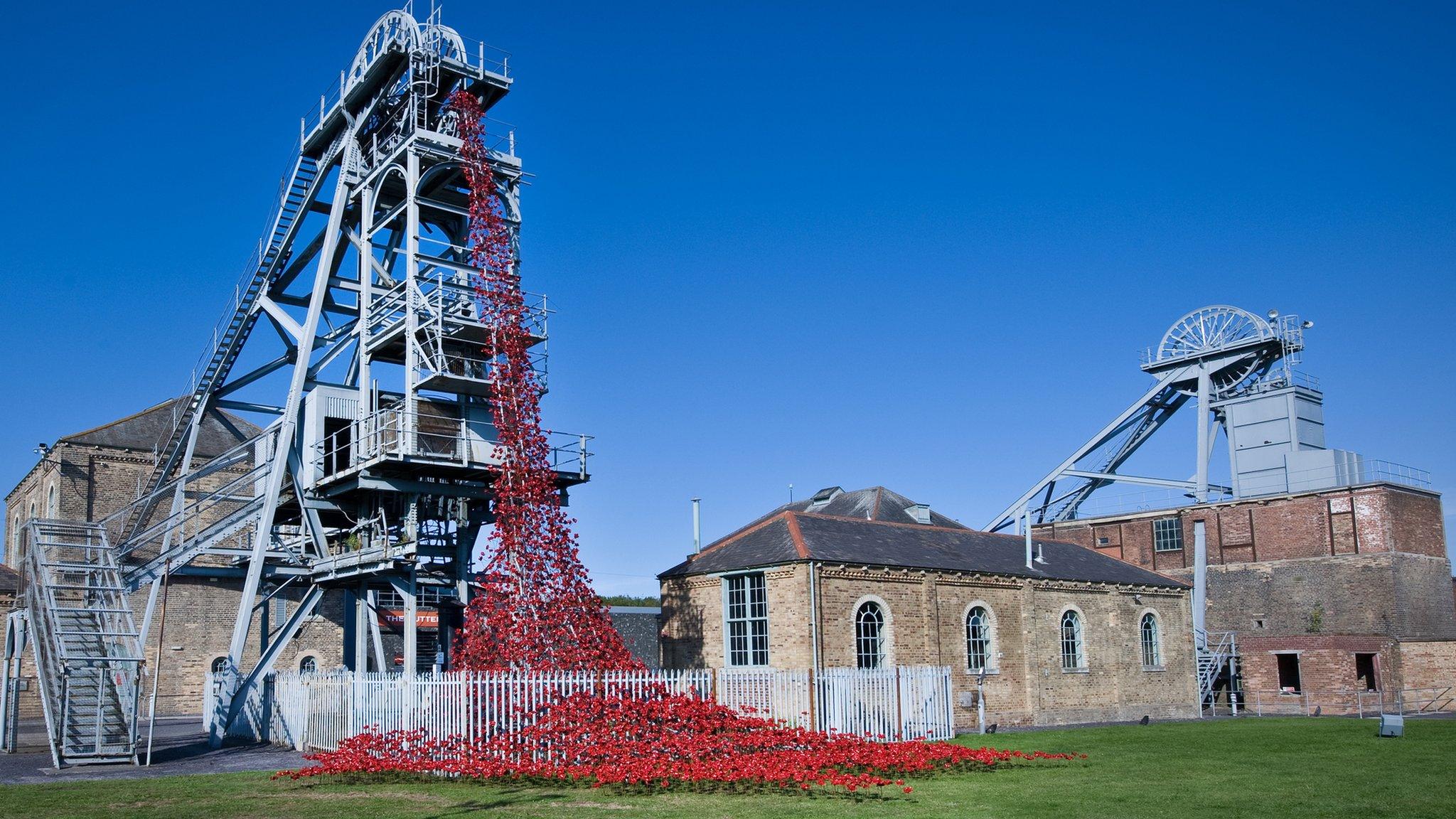
- Published18 January 2016
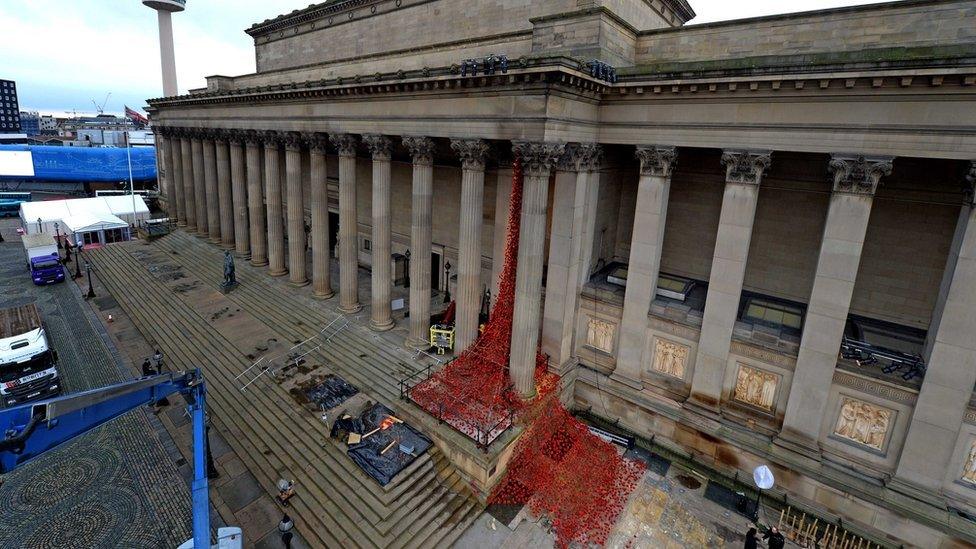
- Published1 November 2015
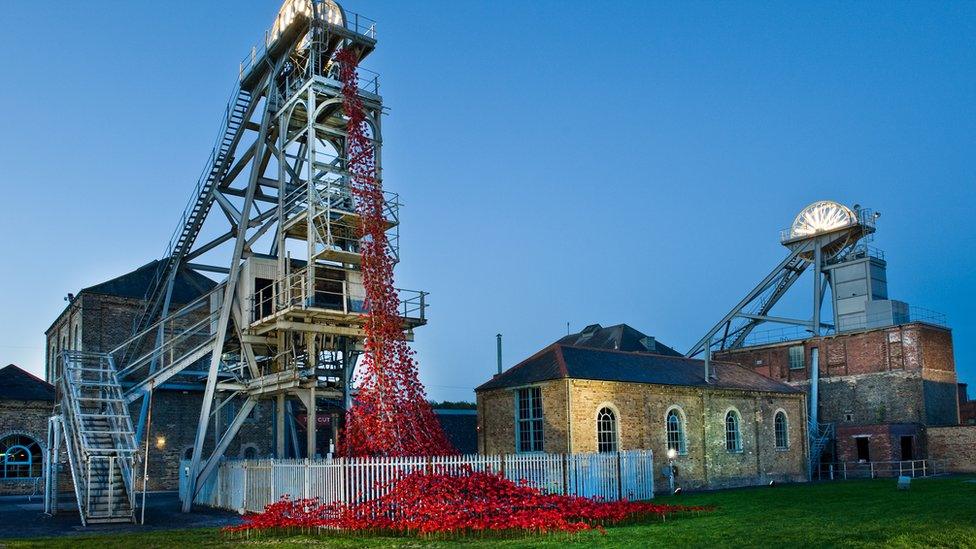
- Published19 October 2015
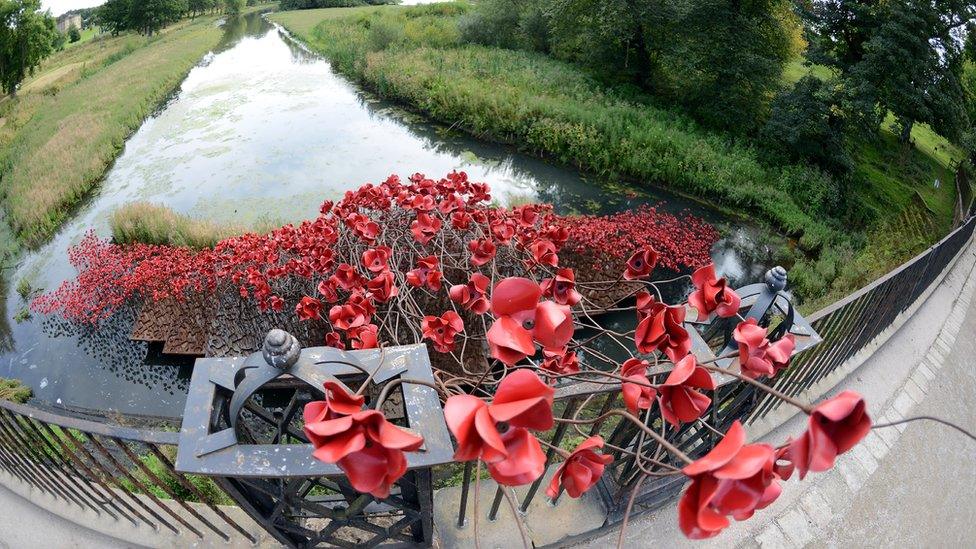
- Published7 November 2014
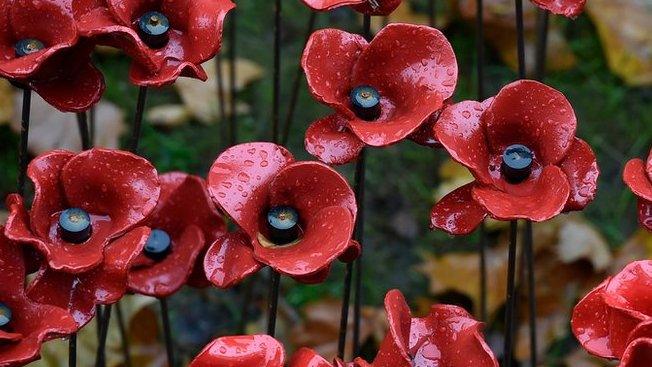
- Published5 August 2014
